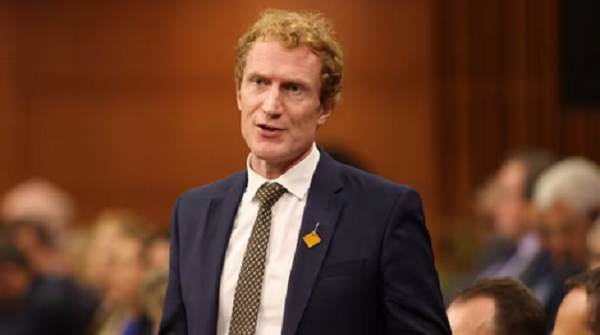Hamilton devises a new method of tackling homelessness, by providing tiny housing to replace encampments
Hamilton is studying ways to provide sanctioned outdoor housing in the Southern Ontario city to alleviate a worsening homeless crisis that has surpassed the capacity of its shelter system, potentially through legal encampments or by building small cabins or tiny homes.
The city created a protocol last year allowing encampments of limited size on public property, with a rule of five tents per encampment and a minimum distance from places such as highways, schools and daycares, as well as any private property. But Mayor Andrea Horwath said she wants the city to go further.
“We’ve done everything we can within the parameters of our encampment protocols,” she said in an interview. “We need to do something different now.”
Cities across the country have been searching for ways to respond to a growing number of homeless encampments in urban areas, with some legalizing encampments in certain areas or creating official locations for people without housing to set up their tents. Hamilton declared a state of emergency last year, as have other cities including Toronto, Ottawa and Niagara Falls, Ont.
At the end of 2022, there were almost 1,600 homeless people in Hamilton, up from 1,024 in 2020, according to municipal data. A report from Hamilton Homeless Mortality showed that at least 91 people died while experiencing homelessness in the city between 2021 and 2023. About half of Hamilton’s homeless population sleeps in parks, on sidewalks and in makeshift shelters, according to the city.
Ms. Horwath announced last week that she had given municipal staff a directive to assess costs, legal frameworks, locations and potential partnerships for what she described as “transitional outdoor shelter” and report back by Sept. 18.
While research into outdoor shelters has been proposed by other Hamilton councillors, Ontario’s “strong mayor” legislation means Ms. Horwath’s initiative carries more urgency and weight, thereby augmenting and expediting the process.
The mayor did not want to prescribe whether the outdoor shelter options should include expanded legal encampments or alternatives like previously proposed cabin communities from the Hamilton Alliance for Tiny Shelters, though she did offer criteria.
“We need something that can be done quickly, that can be responsive to the concerns that we’ve heard from people who are unprepared or unable to go into an actual shelter,” she said. “Things like, being able to have their pets with them, having a place to put their stuff … privacy and security.”
Richard MacPhee, director of the Hamilton branch of Good Shepherd, a charitable organization operating homeless shelters and providing community outreach, said he regularly sees people unable to access shelters because of space shortages, their use of banned substances, and personal circumstances that limit where they can live.
“We are seeing an unprecedented amount of individuals showing up at our door – couples and people with pets,” he said. “The shelter was never designed for that.”
Historically, couples were usually split up. “The woman would go to a woman’s shelter and men would go to a men’s shelter,” he said. Now, many couples prefer to live in an encampment rather than be separated in the shelter system.
“Then there’s also the issue with pets. … The likelihood of someone having an allergy to a pet is pretty high,” he said. “People who are homeless are forced to make that decision of whether they can stay with their pet or without.”
Tom Cooper, director of Hamilton Roundtable for Poverty Reduction and a former board member with the Hamilton Alliance for Tiny Shelters, has previously advocated for tiny cabin homes as a middle ground between shelter and encampment living.
The concept involves a site lined with cabins alongside counselling for addictions, mental health services and security. “It’s really very much a transition model to get people off the street into a little bit more safety, into healthier conditions,” he said.
The model has been implemented in several cities across the country, most notably in Kitchener, Ont., where A Better Tent City has 42 tiny cabins that house 50 residents at a time. They’ve housed about 300 people since opening in 2021.
“What they offer is a combination of security and independence,” said Tony Stortz, a former superintendent at A Better Tent City who went on to found BetterStreet, which extends the model to different parts of Canada. “You see people become healthier, people gain weight; many mental-health care issues decrease because doctors and nurses are able to find people on a consistent basis.”
Mr. Stortz also saw countless people successfully transition out of cabin communities into independent housing. One of those people was Holly Windsor.
After finding herself homeless with a dog and unable to access most of the city’s shelters, Ms. Windsor joined a tent encampment out of a truck garage before securing a small blue cabin from A Better Tent City. “I had pictures hung, a TV stand, a dresser. … Even though it was tiny, it was my space,” she said.
Two years later, Ms. Windsor moved out and into her own apartment.
But the main problem with projects like these has been community pushback. A Better Tent City moved locations several times since opening while Hamilton’s tiny homes project never got off the ground.
“People are upset about losing the use of those parks and those parks becoming unsafe,” said Good Shepherd’s Mr. MacPhee, of outdoor shelter sites. While he’s hopeful about the Hamilton mayor’s directive, he wants a lasting solution. “The issue for us is, is it a long-term solution or are we putting Band-Aids on a crisis?”
This article was first reported by The Globe and Mail













